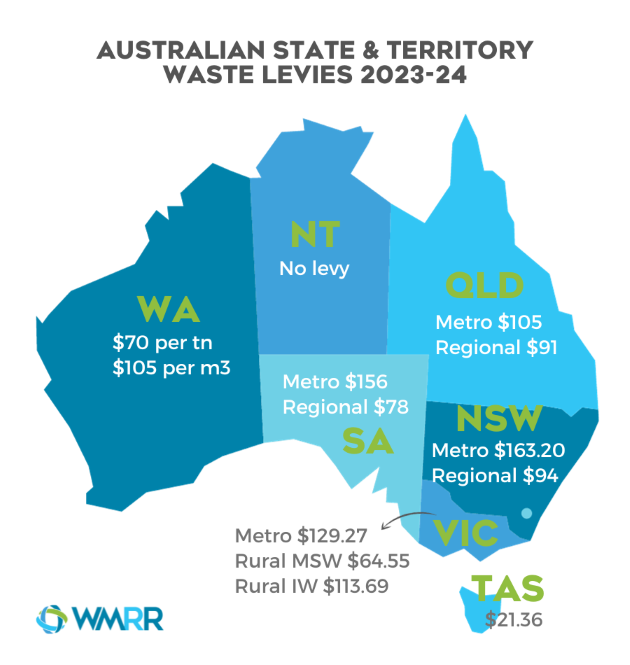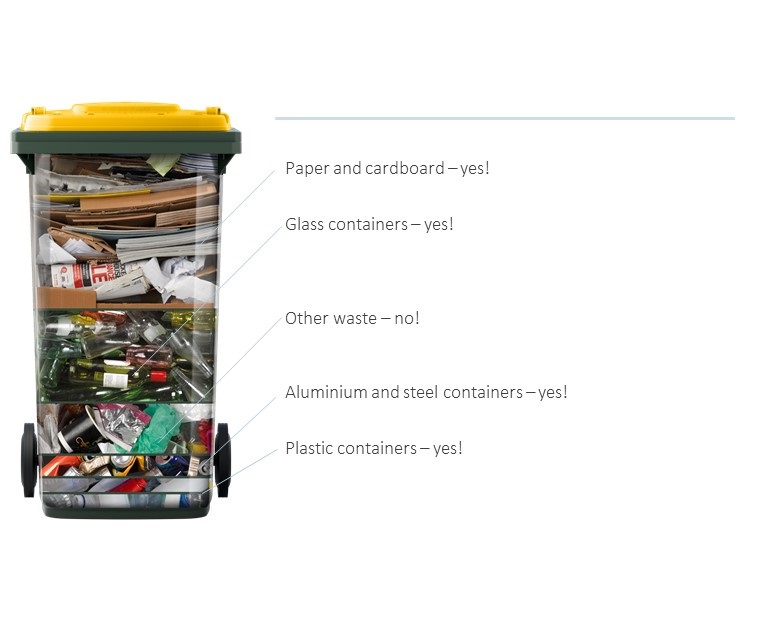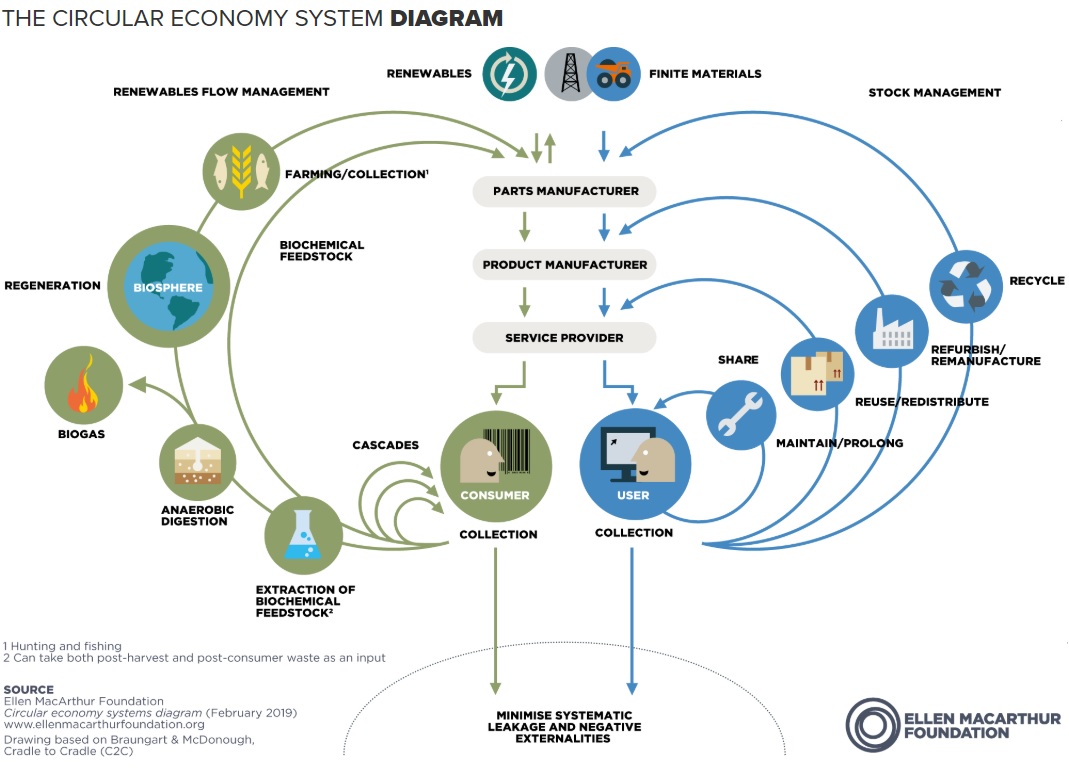Waste and resource recovery landscape
In 2020-21 Australia generated 75.8 million tonnes of waste. It’s about 2.95 tonnes for every person in the nation, and that figure is growing. But at the same time, Australians are continuing to do better and better at dealing with our waste: we currently recycle, re-use or otherwise recover 63% of all waste generated.
The waste management and resource recovery sector plays a key role in managing the environmental and social impacts and benefits of our waste. The industry employs 50,000 Australians and contributes over $15 billion to the economy annually.
WMRR supports the principles of the waste management hierarchy - more here.
Read on for a deeper look at Australia’s waste and resource recovery sector, the challenges we face and the path forward.
NATIONAL WASTE REPORT 2022 National Waste Report 2020 National Waste Policy Action Plan 2019
LANDFILL LEVIES
Landfill levies are imposts charged by governments on waste which is sent to landfills instead of recycled. These levies are designed to discourage a paradigm of disposability, while using the funds raised to encourage the development of new resource recovery markets and technologies.
When set up and run well, landfill levies have minimal effect on household consumers but are hugely beneficial to the environment and economy. However, when landfill levies are poorly designed or misaligned across borders, they can have unintended and counter-productive outcomes.
 (950 × 950px) (900 × 950px) (3))


 (950 × 950px) (900 × 950px) (3))
WMRR has developed a fact sheet that details the waste/landfill levy rate across states and territories, the levy monies collected, and funds directly reinvested into the WARR sector of the 2022-23 FY. WMRR members may access this fact sheet here.
WMRR advocates for a harmonised system of landfill levies applied across Australia; a minimum 50% hypothecation rate of levies returned to industry; and a legislated proximity principle to prevent the long-distance transport of waste. Find out more about our policy and advocacy and get involved with our work on landfill levies.
The Levy Rates for 2023-24 across state/territories are summarised below. You can refer to the fact sheet linked above for further information.
| State/territory |
Rate
FY23-24 ($/t) |
Regional ($/t) |
Metro ($/t) |
Other ($/t) |
|
| ACT |
$109.20-358 |
- |
- |
Various. Refer to ACT Fees and Charges for details. |
|
| NSW |
$94-163.20 |
$94 |
$163.20 |
- |
|
| QLD |
$91-185
|
$124 (Regulated waste category 1)
$124 (Regulated waste category 2)
|
$185 (Regulated waste category 1)
$135 (Regulated waste category 2)
|
Other leviable waste:
$91 (Regional)
$105 (Metro)
|
|
| SA |
$42.50-156 |
$78
|
$156
|
$42.50/kL (Liquid waste) |
|
| VIC |
$64.55-129.27 |
$64.55 (Rural municipal waste)
$113.69 (Rural industrial waste)
|
$129.27 (Metro municipal and industrial waste)
|
- |
|
| TAS |
$21.36 (State-wide levy) |
- |
- |
- |
|
| WA |
$70 |
- |
- |
- |
|
| NT |
N/A |
- |
- |
- |
|
AUSTRALIA'S HOUSEHOLD RECYCLING AND COLLECTION SYSTEMS

While household recycling and collection systems across jurisdictions have both similarities and differences, WMRR is encouraging councils to advise their community to abide by three basic rules when thinking about which materials they can place in their yellow (recycling) bin:
1. The yellow bin is only for single material (not composite) packaging waste, i.e. paper and cardboard, as well as containers made of glass, plastic, steel, and aluminum from your kitchen, bathroom, and laundry... nothing else.
2. Empty and dry all containers before placing them in your yellow bin.
3. Finally, if in doubt, throw it out!
State/territory-specific information about materials that can go into your yellow (recycling) and other bins can be found by following the links below:
ACT
NSW
VIC
SA
QLD
WA
NT
TAS
A CIRCULAR ECONOMY
Australian jurisdictions have a shared vision of transitioning to a circular economy. But what is a circular economy?
A circular economy gradually decouples economic activity from the consumption of finite resources and designs waste out of the system. Thus, a circular economy must be one that focuses
on material design, avoidance of the creation of waste, and making polluters/generators responsible for
the cost of managing their materials as well as re-using of post-consumer recyclate in product design. In fact, once it is "waste", it is too late; a circular economy does not capture materials that are put into the waste and resource recovery system but focuses on materials before they are even consumed.
As present Australia continues to operate a linear (take, make, dispose) economy where the waste and resource recovery industry and local government continue to bear the majority of responsibility for the end-of-life materials that we simply receive and not create. Waste and pollution are the consequences of decisions made at the design state where around 80% of environmental impacts are determined (Source: The Ellen MacArthur Foundation). A circular economy can only be built when it is based on three key principles:
1. Designing out waste and pollution.
2. Keeping products and materials in use.
3. Regenerating natural systems.
Australia, as an OECD country, should learn from other
member countries by introducing policies that drive market demand for recycled products, make producers
responsible for their materials, implement funding models that result in polluter-pays, and enforce strong
targets and penalties.
Building a circular economy requires a shift in thinking and an integrated resource management system - not a "waste system" - that first and foremost avoids the creation of waste, with the materials that are indeed consumed, managed within the waste and resource recovery system.
To find out more, check out the Ellen MacArthur foundation here .

Data
To continue to improve recycling rates, Australia needs certainty around material flows and market demand. Read more
Fact Sheets and Reports
Research and guidance from WMRR, government departments and other stakeholders in the waste sector. Read more